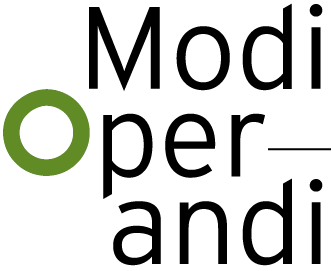BIBLIOGRAPHY
ARAMESH, Kiarash. ‘History of Attitudes toward Death: A Comparative Study between Persian and Western Cultures.’ Journal of Medical Ethics and History of Medicine, 9, no. 20 (2016).
ARIÈS, Philippe. Western Attitudes toward Death: From the Middle Ages to the Present. London: Marion Boyars Publishers Ltd., 1974.
BATAILLE, George. ‘Architecture.’ In Rethinking Architecture; A Reader in Cultural Theory, edited by Neil LEACH, 19-21. London and New York: Routledge, 1997.
BAYATRIZI, Zohreh and Hajar GHORBANI. ‘The Bureaucratic Professionalization of Funeral Rites in Tehran’s Behesht-e Zahra Cemetery.’ In Death Across Cultures; Death and Dying in Non-Western Cultures, edited by Helain SELIN and Robert M RAKOFF, 103-118. Cham: Springer, 2019.
BEALL, Jo and Sean FOX S. Cities and Development. New York: Routledge, 2009.
BRAIDOTTI, Rosi. The Posthuman. Malden, USA: Polity Press, 2013.
CHUK, Natasha. Vanishing Points; Articulations of Death, Fragmentation, and the Unexperienced Experience of Created Objects. Bristol, UK: Intellect Ltd, 2015.
CONNELLY, Lindsay Mae. Life, Death, and Design. Pennsylvania: The Pennsylvania State University, 2017.
DARWENT, David F. ‘Urban Growth in Relation to Socio-Economic Development and Westernisation: A Case Study of Mashhad, Iran.’ PhD diss., University of Durham, 1965.https://core.ac.uk/download/pdf/108553.pdf.
DELANDA, Manuel. A New Philosophy of Society: Assemblage Theory and Social Complexity. London: Bloomsbury Publishing Plc, 2006.
DRAKE, Scott. A Well-Composed Body: Anthropomorphism in Architecture. Canberra: University of Canberra, 2003.
FINKELSTEIN, Clemens C. ‘Architectures of Excarnation: Ecstatic Being, or an Ontology of Defleshing.’ San Rocco, 15, ‘Muerte’ (2019): 52-61.
GHORBANI, Hajar. ‘Martyr, Martyrdom and Nation State: The Politics of Death in Contemporary Iran.’ CDAS conference, The Politics of Death, University of Bath: Center for Death and Society, June 2018.
HALBERSTAM, Judith M and Ira LIVINGSTON, eds. Posthuman Bodies. Bloomington: Indiana University Press, 1995.
HEIDEGGER, Martin. ‘The Thing.’ In Poetry, Language, Thought, translated by Albert HOFSTADTER, 161-184. New York: Harper & Row Publishers, 1971.
KELLEHEAR, Allan. A Social History of Dying. USA, New York: Cambridge University Press, 2007.
LAMBERT, Léopold. ‘Architectures of Joy: A Spinozist Reading of Parent/Virilio and Arakawa/Gins’ Architecture.’ The Funambulist Pamphlets, vol 1: ‘Spinoza’ (2013): 41-51.https://library.oapen.org/bitstream/handle/20.500.12657/25583/1004512.pdf?sequence=1&isAllowed=y
LOOS, Adolf. Someone Is Buried Here: Adolf Loos on Architecture and Death. Vienna: Neue Freie Presse, 1910. https://thecharnelhouse.org/2014/03/17/someone-is-buried-here-adolf-loos-on-architecture-and-death/
MELLOR, Philip A and Chris SHILLING. ‘Modernity, Self-Identity and the Sequestration of Death.’ Sociology, 27, no. 3 (1993): 411-431.
MIRDAMADI, Moujan. ‘How Does the Death Conscious Culture of Iran Affect Experiences of Depression?’ Culture, Medicine, and Psychiatry , 43 (2019): 56-76.
NASIRI, Mohammad. ‘In Iran, a Massive Cemetery Struggles to Keep up with the Virus.’ In: AP News, 11 November 2020. https://apnews.com/article/iran-massive-cemetery-virus-a0110a5c8a2813fd48cabc4ec15e2288.
PEPPERELL, Robert. The Posthuman Condition. Bristol, UK: Intellect Books, 2003.
ROSSI, Aldo. A Scientific Autobiography. Cambridge, US: The MIT Press, 1981.
SCALBERT, Irénée. ‘Death at Noon.’ San Rocco, 15, ‘Muerte’ (2019): 37-47.
SUPERSTUDIO, The First City. From The Twelve Ideal Cities project, aerial perspective,MoMA, 1971. www.moma.org/collection/works/196?artist_
UIA. Dehumanization of Death; The encyclopaedia of world problems & human potential. 2020. http://encyclopedia.uia.org/en/problem/dehumanization-death.
UNGERS, Oswald Mathias. Morphologie _ City Metaphors. Köln: Verlag der Buchhandlung Walther König, 1982.
VIDLER, Anthony. ‘The Building in Pain: The Body and Architecture in the Post-Modern Culture.’ AA Files, no. 19 (Spring 1990): 3-10.
WORPOLE, Ken. Last Landscapes: The Architecture of the Cemetery in the West. London: Reaktion books, 2003.
